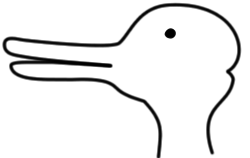This assignment comprises the first few sections of the third of Putnam’s Dewey Lectures (actually, an expanded version of that lecture). In this series of lectures, Putnam reports another change in his thinking. The lecture we will be discussing will mainly describe the results of that change. The end of the first lecture (pp. 456-465), looks back to his views in “Realism and Reason.”* Even if you don’t read the whole of this discussion, it might be useful to read the end of p. 457 (roughly the bottom 40%) and footnote 41 on p. 463.
• In the introductory paragraphs and first titled section (pp. 488-494), Putnam describes the historical context of his thinking in ways that are probably more informative about his thinking than about that context. In particular, the rejection of the idea of an interface in cognition played an important role (during the late 1950s) in the development of a range of views about the mind for which the label “functionalism” is using, but Putnam associates his rejection of the interface with his criticism of functionalism. In short, I think his “second naiveté” is best seen not simply as a rejection of the idea of an interface but rather as a particular way of rejecting it. Perhaps the best way into what he has in mind when he speaks of “naive realism” will come by thinking through the examples of the duck-rabbit† (p. 490) and Wittgenstein thinking about his brother (p. 492).
• The bulk of our discussion will probably concern the next section (pp. 494-500), where Putnam compares the views of Dummett, deflationists, and metaphysical realists. The “global anti-realism” he associates with Dummett is essentially the non-reductionist form of anti-realism Dummett presents on pp. 242-244 of his paper (the term is introduced later in the paper, p. 250). For deflationism, think of Ramsey and Tarski (understood as Soames suggests). And metaphysical realism is the view Putnam criticized in “Realism and Reason.”
*The “Skolem paradox” he refers to there is tied to the idea used on p. 485 of “Realism and Reason” to say that T1 can be made true using an infinite collection of objects of any size. The “paradox” is that T1 may seem to specify the size of universe—e.g., that it is small enough that each object can be assigned a different integer as an ID number.
†A duck-rabbit:
